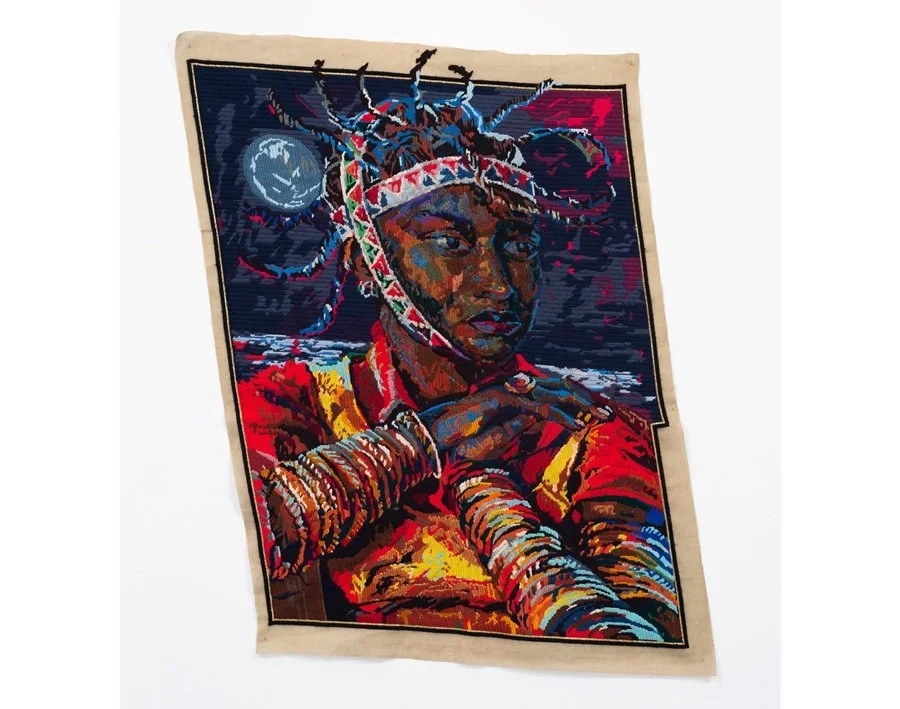Athi-Patra Ruga (b. 1984, Mthatha, South Africa)
Act One: Scene 2... Nomalizo at Intonjane From The Lunar Songbook
2021, wool and thread on tapestry canvas, 132 × 117 cm.
Photo by Eva Presenhuber. Courtesy of the artist and WHATIFTHEWORLD. ©Athi-Patra Ruga.
Nomalizo Khwezi is one of Ruga’s protagonists in his series The Lunar Songbook. In this tapestry, she delicately clasps her hands as she is about to undergo the ritual of intonjane. Intonjane, is the ritual in Xhosa culture whereby girls are initiated through the rites of passage into womanhood. But the tapestry and the frame around Nomalizo are skewed. Could this suggest that tradition is being subverted?
READ ABOUT THE BACKGROUND HERE…
The term is thought to come from the life cycle of a stick insect - when a caterpillar is ready to metamorphose, it forms a cocoon and sleeps until it is ready. These cocoons, which look like grass and are called ntonjane, dot the trees of the veld.
During intonjane, a girl stays in a hut and is taught by older women to prepare herself for womanhood and marriage. The hut is covered in grass mats that resemble the cocoon of a stick insect. Nomalizo is about to undergo this rite of passage. Her gaze is directed at something ahead, which is unknown to us.
In The Lunar Songbook, Nomalizo is a queer woman torn between her traditional rural life, and the Western culture of the city. In this artwork, she is a person in transition, about to leave girlhood behind and learn the values of traditional Xhosa womanhood. The rich, vivid colours of the tapestry, and the subject of a black woman in traditional clothing, reminds us of Irma Stern’s portraits of African women. Ruga, and Nomalizo, is referencing but is also looking ahead at a future that they are forging for themselves.

